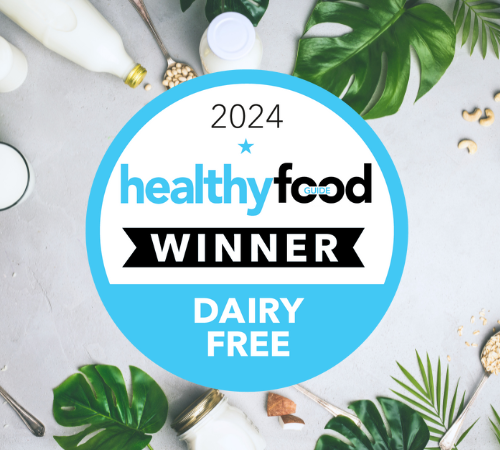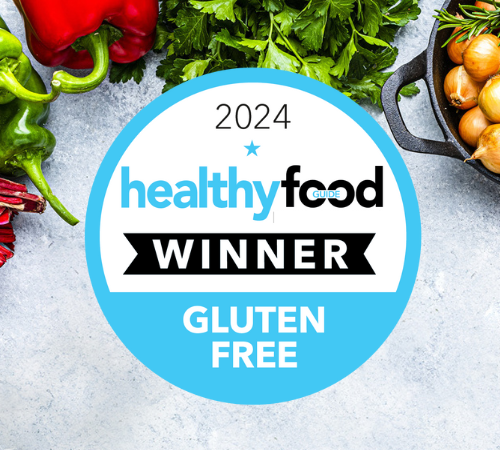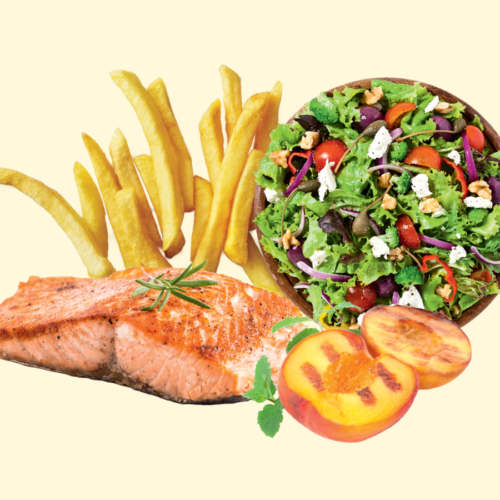
Handy? Tick. Tasty? Sometimes. Healthy? Not always. HFG helps you heat up the healthiest, frozen ready-made meals.
Frozen meals are an easy way to save time and energy on busy weeknights. But while they may be convenient, not all of them meet the good-for-you criteria. So, if you fancy a handy frozen dinner, here’s what you need to know to enjoy a healthier microwave meal.
What’s cooking?
From gourmet risottos and Asian stir-fries to traditional meat and three veg meals, you name it, you’ll find it in the freezer section of your local supermarket. HFG takes a look at what’s on offer.
Portion controlled ready meals
If you’re trying to lose weight, you might have sampled the large range of portion-controlled frozen meals available nowadays. While these dinners are light on kilojoules/calories, they can be low in hunger-busting protein and high in sodium, which is bad news for heart health.
Health-centric ready meals
Edamame beans, pepitas, kale, chia seeds, freekeh… You no longer have to scour the shelves of your local health food store for these trendy ingredients as they are often included in mainstream frozen meals. But buyer beware: meals made with these healthy ingredients can still be high in saturated fat and sodium.
Plant-based options
The meat-free trend has made its way into convenient ready-made meals, too, but just because something is ‘plant-based’ doesn’t mean it’s automatically healthy. Meat-free meals can be particularly high in sodium due to the addition of salty meat alternatives, such as ‘chickenless’ chicken, plant-based meatballs and ‘non’ burgers.
Traditional meals
You’ll find plenty of home-style favourites in the supermarket freezer section, such as macaroni cheese, chicken parmigiana and beef lasagne. Depending on the manufacturer, these meals can be packed with excessive kilojoules/calories and, like most frozen meals, be high in sodium and saturated fat as well.
Fitness-focused frozen meals
High-protein meals help to build lean muscle mass and keep you feeling full for longer, so these options are a wise idea. As a general rule of thumb, fitness-focused meals are the best of the frozen meal bunch, but you should still check the label for added salt, sugars and fat.
What about frozen pizzas?
Just like ready-made meals, there’s a lot of variation among frozen pizza slices. Pizzas topped with processed meats such as ham, salami and prosciutto tend to contain the most saturated fat and sodium. Vegetarian and seafood pizzas can be slightly healthier choices. If your go-to convenient meal is a whole frozen pizza, a healthier option is to split it between a few dinner buddies and serve with a homemade salad.
Convenient cuisine checkpoints
For a healthier, dietitian-approved frozen dinner, look for the following on nutrition labels at the back of the box:
- A simple ingredients list made up of real, whole foods.
- Around 1700kJ (400cal) per serve or less to keep portion size in check.
- At least 15g protein per serve. Protein satisfies a grumbling tummy for longer than a low-protein meal.
- Less than 5g saturated fat per serve to keep your ticker healthy. Creamy sauces and processed meats, like bacon and sausages, can ramp up the saturated fat content.
- Less than 700mg sodium per serve for heart health.
www.healthyfood.com










